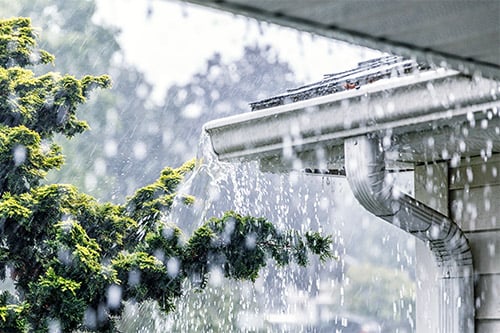

 Amy Graham of RSA Canada tells IBC how Canadians can protect their properties during fluctuating weather conditions
Amy Graham of RSA Canada tells IBC how Canadians can protect their properties during fluctuating weather conditions
After severe blizzards, ice storms and other extreme winter weather, it’s important for homeowners and business owners to take appropriate steps to protect their properties before the great spring thaw.
Across Canada, property damage caused by water is on the rise. Given the reality of accelerated global climate change, all signs point toward water damage becoming an increasingly prevalent issue for home and business owners across the country. The issue is amplified tenfold in the spring months, when temperatures fluctuate, the winter snow and ice start to melt, and the levels of rainfall increase.
“Spring brings an abundance of rainfall and unpredictable weather,” says Amy Graham, national property underwriting manager for personal insurance at RSA Canada. “Rain events can happen quickly, and increasingly in the last few years, we’ve seen them occurring over much larger geographic areas and for a longer duration. Most of the homeowners’ insurance claims that we see in the spring are related to overland water getting into the home, whether from rapid snowmelt or heavy rains.”
Insurance brokers are key to ensuring that Canadians are equipped with the appropriate knowledge, tools and insurance coverage to protect their properties during fluctuating weather conditions or excessive rain. To help with this, RSA Canada has released an Extreme Thaw tip sheet, which is available to brokers alongside multiple other climate-related resources on RSA Canada’s Climate Smart page at rsabroker.ca/climatesmart.
Property owners need to think about both the outside and the inside of their properties when mitigating the risks of extreme thaw. For external risks, RSA Canada advises policyholders to shovel paths or trenches so that melting snow and rainwater can run away from the property, not toward it. In the same vein, the insurer recommends checking that all downspouts divert water away from the property, and that eavestroughs are clear so water can run through easily. For properties with a sump pump, property owners should check that it’s working properly and is discharging water at least nine metres from the foundation of the property.
Many spring-thaw-related water damage claims involve either a roof or a basement. To avoid basement claims, RSA Canada suggests raising any personal belongings stored in the basement off the floor to prevent potential water damage. Homeowners should also inspect their basement ceilings for leaks after outside water supply lines have been turned on in case a pipe froze or burst during the winter.
“The best advice that brokers and insurers can give to homeowners is for them to be proactive about protecting their property and to exercise proper maintenance and care,” Graham says. “There is mitigation that can be done that might help with insurance premiums, such as installing battery back-ups for your sump pump or an in-line backwater valve.”
One of the biggest risks property owners face during times of fluctuating temperature is ice damming, which occurs when water builds up behind a blockage of ice. The ridge formed by an ice dam can prevent further snow and ice melt from draining off a roof, causing water to back up and eventually leak into the home. This is one of the most common causes of weather-related damage and is a frequent source of spring property damage claims.
To protect against the costly consequences of ice damming, RSA Canada advises property owners to hire a professional to remove the bulk of snow from a roof as soon as possible after a severe snowstorm. The insurer also recommends proper roof ventilation, as a cool attic during the winter months can prevent the thaw-freeze cycle that triggers ice damming.
Having the right insurance coverage is essential alongside best practice property risk mitigation. RSA Canada’s enhanced Waterproof Coverage endorsement provides property owners with a clear, combined coverage option for sewer back-up and overland flood (including from eaves, downspouts, drains, and sudden and rapid snow or ice melt). More information on RSA’s Waterproof Coverage can be found at rsabroker.ca/water. For extra tips and advice on how to protect properties against weather-related damage, visit rsabroker.ca/climatesmart.
